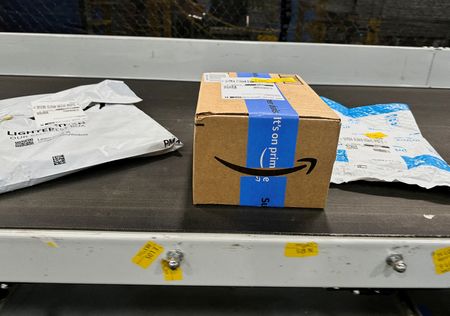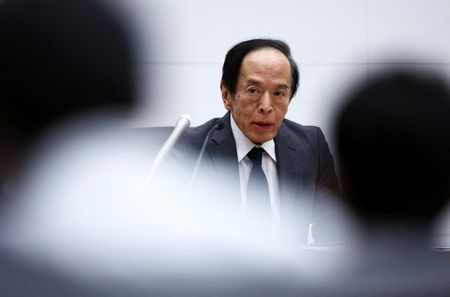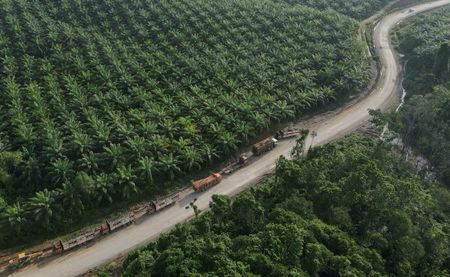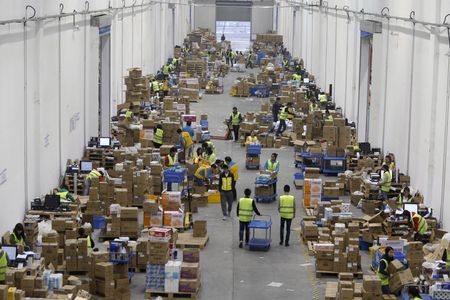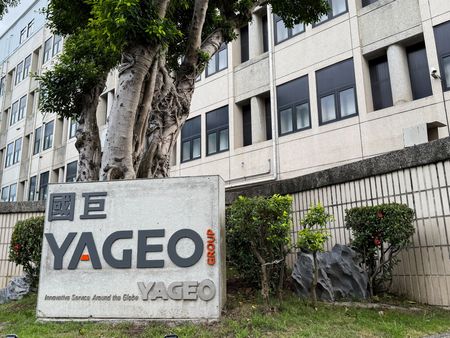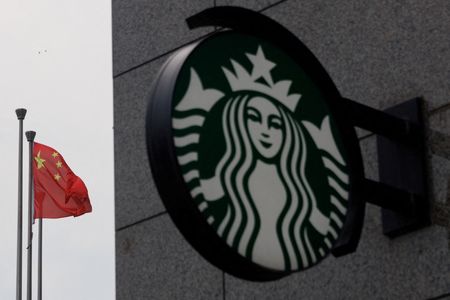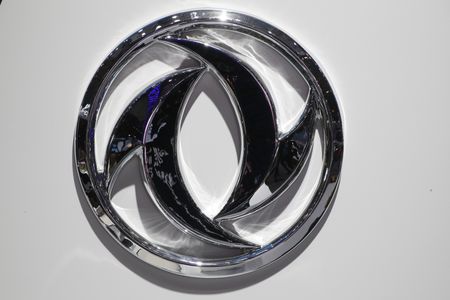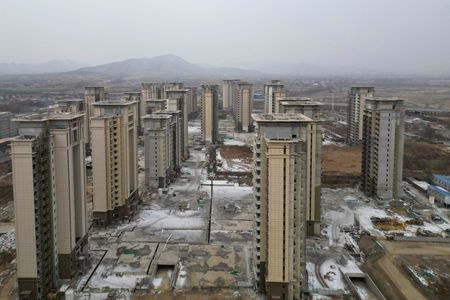By Arriana McLymore, Greg Bensinger
NEW YORK (Reuters) -Amazon’s Prime Day is losing its luster among a critical group: sellers.
Some third-party merchants who previously sold China-made goods during Amazon’s premier July shopping event are sitting it out this year or reducing the amount of discounted merchandise they offer.
The planned pullback, which hasn’t been previously reported, is a way for sellers to protect profit margins amid the U.S.-China trade war triggered by steep tariffs placed by U.S. President Donald Trump on Chinese goods, according to four merchants and six consultants collectively advising hundreds of Amazon sellers.
Among them is Steve Green, who sells $230 bicycles and $60 skateboards from China on Amazon’s online marketplace. Green said he’s skipping Prime Day for the first time since 2020.
He’s holding back merchandise he imported before Trump’s tariffs took effect on April 9, to sell later at full price. The China tariffs, which stand at 145%, will more than double his costs of goods on newly imported merchandise, making it “unaffordable,” he said.
Similarly, Kim Vaccarella, chief executive of China-made tote bag company Bogg Bag, also decided to skip Prime Day this year, to retain some of her unsold U.S. inventory, which she hopes to sell at Macy’s Bloomingdale’s, Dick’s Sporting Goods and smaller, independent shops, at full price or for smaller discounts. She’s halted production of China-made Bogg Bags, which sell for $70 to $200 on Amazon, while she works to move manufacturing to Cambodia and Vietnam.
Prime Day has traditionally been one of Amazon’s biggest shopping events of the year, behind Black Friday and Cyber Monday, respectively. And while participation is optional, Amazon spends millions promoting Prime Day on television and social media ads, telling sellers that they will benefit from a halo effect by getting their merchandise in front of a larger audience of shoppers. Amazon has around 200 million Prime subscribers worldwide.
Tariffs on sellers’ goods are putting Amazon in an awkward position for Prime Day, said Arun Sundaram, an analyst at CFRA Research.
“Amazon will be fine, but I do feel for some of the third-party sellers – they’re the ones that are going to be hurt the most in this environment,” Sundaram said.
An Amazon spokesperson said it is having a “strong response from selling partners to Prime Day 2025.”
The deadline for electing to participate in Prime Day is May 23, according to one seller consultant. A pullback by third-party merchants could mean fewer fees and less ad revenue for
Amazon, as well as a more limited selection of discounted items. In prior years the event has generated significant sales and new Prime memberships, which cost $14.99 monthly or $139 annually.
Rick Sliter, CEO of pillow company MedCline, which sells $250 therapeutic pillows made in China and Vietnam, said he was likely to hold off on offering discounts during Prime Day, even though last year’s event brought in sales seven times higher than a typical day.
“Last year Prime Day was a no-brainer,” said Sliter. “But if tariffs continue, discounting gets thrown out the window.”
Prime Day generally pinches profitability for merchants, Sundaram said, because there is so much discounting compared to a regular day. The average Amazon seller reaps about 15% to 20% of a sale as a profit after cost of goods sold and Amazon’s fees, according to consultants.
Amazon takes a 15% commission on each unit sold, not including the fees required to advertise and host discounts on Prime Day. Sellers pay Amazon $1,000 to have a discount highlighted as a “Best Deal” or $500 to have an item highlighted as a “Lightning Deal,” for instance.
Adam Wilkens, who advises about 30 Amazon merchants, said that some of his clients “can’t even think about Prime Day yet because they don’t have their tariff pricing adjustments finalized.”
U.S. shoppers spent $14.2 billion during Prime Day last year, 11% more from the previous year, according to research firm Adobe Analytics. Amazon has not announced the exact date for Prime Day, but said it would spread across four days in July.
Green said that he paid between $200 to $500 in Amazon fees and gave $3,000 to $5,000 in discounts during last year’s Prime Day, but the sales event this summer is too risky.
Not all Amazon merchandise comes from third-party sellers. It also has “first party” relationships with some suppliers, such as Hasbro toys, where it buys products directly wholesale, handling most of the selling details itself. Much of that inventory is also made in China.
Chief Executive Andy Jassy said during a CNBC interview on April 10 that it is doing “strategic forward inventory buys” and renegotiating terms to keep prices low for shoppers amid the China tariffs. He said he expected sellers to pass along costs to consumers by raising prices.
Amazon has begun surveying some of its largest vendors and third-party sellers to see how tariffs are impacting their businesses ahead of Prime Day, according to consultants that work with Amazon vendors.
Third-party sellers accounted for nearly 62% of units sold in the fourth quarter of 2024, according to e-commerce research firm Marketplace Pulse.
Other sellers are experimenting with price increases, cutting back on advertising or gradually importing merchandise to avoid drastic financial impacts of tariffs, instead of bowing out of Prime Day completely.
Michael Slate usually spends the spring preparing his home goods company KitchenEdge for Prime Day, one of his busiest shopping times of the year. But this year is different.
“With the uncertainty, I can’t offer a 20% discount when I don’t know what my product cost is going to be in the future,” he said.
“Nearly all my clients are pulling back in Prime Day deals,” said Jon Elder, a consultant who counts 100 Amazon sellers as clients. “It’s rough right now. Lots of difficult decisions are being made.”
(Reporting by Arriana McLymore in Los Angeles and Greg Bensinger in Seattle. Editing by Vanessa O’Connell and Michael Learmonth.)

